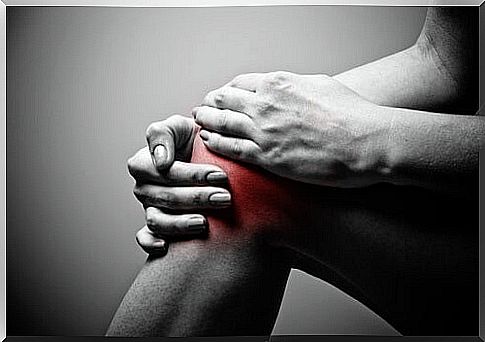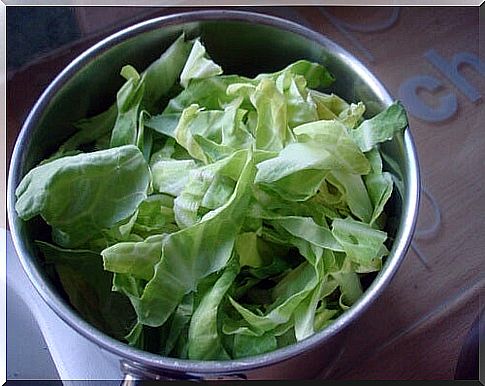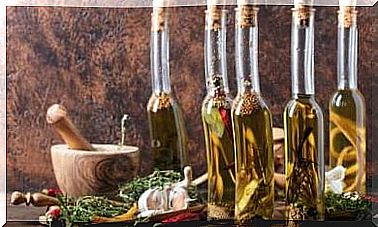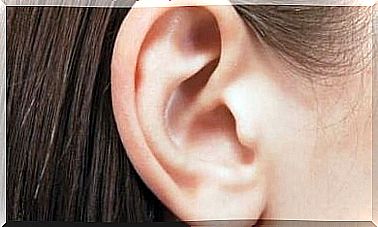How Knee Pain Can Be Treated
Ginger can help us relieve muscular discomfort and knee pain. We can add it to various dishes, prepare a tea or even use it locally

It is widely believed that knee pain is particularly common in athletes and the elderly. You can find out how knee pain also affects other people here.
The fact is that this type of pain can occur at any age, in any occupation, and regardless of physical activity.
A single awkward movement can suddenly cause severe knee pain . Or the pain starts in a mild form but increases over time until it becomes unbearable.
In this article we would like to introduce you to a few means that can be used to treat knee problems.
Causes of knee pain

The knee joints are not only our largest joints, they are also among the most heavily stressed structures in our body. They are used all day every day and then often have to carry our entire body weight for hours .
Their structure is very complex. In addition to the thighs and shins, joint components and auxiliary structures such as menisci and ligaments are also responsible for the fact that we can bend and straighten our legs and walk upright.
The knee joints are built for long-term use, but they will still show signs of wear and tear. These are particularly common in people over 60 years of age.
But it should be emphasized once again that no age group, no individual person is immune from knee pain.
Numerous factors can contribute to pain in one or both knee joints. The most common causes of such complaints include:
- Overweight and obesity
- excessive wear and tear of the joint from age or overuse, at work or during sports
- genetic predisposition to gonarthritis or other diseases of the (knee) joints
- infectious diseases of the anatomical structures involved
- Baker’s cyst (an increase in the circumference of the hollow of the knee)
- Osgood-Schlatter disease (pain in the upper tibia)
One very important point is still missing from our list: trauma. Because knee pain is so often traumatic, we would like to list the most common injuries to structures near the knee:
- Sprains
- Pulled muscles
- Torn ligaments
- iliotibial band syndrome (“runner’s knee”)
- Dislocations, fissures and fractures that can affect the shinbone or the kneecap, for example
- Injuries to the articular cartilage
But how can knee pain be prevented?

There is little that can be done about genetic predisposition or old age. However, that doesn’t mean knee pain is inevitable in these situations.
A variety of habits and exercises can help prevent pain and relieve existing pain.
Perhaps not all of the items on the following list apply to you. But there’s definitely something you can do here:
- lose weight
- Wear adequate, comfortable footwear and pay attention to the cushioning when buying shoes – the use of high-heeled shoes is not advisable
- Avoid standing for hours
- thorough warm-up before physical activity
- you should also stretch after completing the training session
- Adapt the intensity of sporting exercises to your own body
- to go biking
- If possible, don’t run downhill, but walk slowly
Basic rules for protecting the knee joints
If you have only recently started experiencing discomfort in the knee joints and they are not too severe, there are a few simple steps you can take to do them good.
We recommend:
- Take regular breaks, keeping your legs up
- cool, at least 15 minutes a day, but ideally repeated
- Avoid movements that cause pain
- Do not lift heavily
- use an elastic bandage available at drug stores or pharmacies
- at night a pillow under the knees lay
- may be taking an anti-inflammatory drug
Care should be taken with anti-inflammatory agents of any kind. There is a risk that we will become pain-free as a result of taking pharmaceuticals and then stress the joints as usual, which can lead to further damage.
Therefore, the following applies: Despite anti-inflammatory drugs, the joint should be spared. If there is no improvement after a few days, a doctor should be consulted.
Home remedies for knee pain
These natural remedies can be used in every household without any problems, because all “ingredients” can be found in the home kitchen.
They help relieve the pain. But here too, a doctor should be consulted if the pain persists or is severe.
cold

Cold compresses or ice are particularly suitable for relieving knee pain if they are caused by inflammation . This is the case, for example, with tendinitis, arthritis or after a blow to the knee.
Put a few ice cubes in a plastic bag and wrap it in a tea towel. Use it to cool your sore knee for 15 minutes.
Cooling painful joints should always be combined with rest, support (bandage, bandage) and elevated positioning. This not only reduces swelling and pain, the pressure on the joint is also significantly relieved.
olive oil
As soon as the first pain is felt, gentle massages with a few drops of olive oil should be performed. Circular movements are preferable.
The idea behind the massage is to increase the temperature slightly, which helps the inflammation to heal. The oil itself provides anti-inflammatory ingredients and also stimulates blood flow to.
Instead of olive oil, coconut oil can also be used, which also has anti-inflammatory and pain-relieving effects. However, we need more than just a few drops of coconut oil and should use half a cup of slightly warmed oil.
Anti-inflammatory vegetables
Chili is one of the vegetables that are most effective for knee pain. A small amount of chilli applied to the affected joint is enough to achieve an effect.
If chilli is mixed with a little water and used locally, it causes slight skin irritation and an increase in temperature. Because of that skin irritation, too much chili should not be used!
Other vegetables that can be used locally for knee pain are garlic and onion. Garlic cloves or onion bulbs are cut open and the painful joint is rubbed with them.
Cabbage

Cabbage has amazing anti-inflammatory effects. That is why it is also worth using it for knee pain.
Grind a few leaves of cabbage in a small amount of water, then apply the resulting cream to the affected knee joint. Now cover it with gauze and an elastic bandage and let the cabbage work. Change the bandage twice a day.
Spices
Ginger is characterized by its ability to relieve muscle and joint ailments and is particularly recommended for those who suffer from osteoarthritis.
Even turmeric can be used.
Both spices can be added to daily meals. A delicious tea can be made from ginger and a glass of warm milk with turmeric is also good.
Herbs
There are many anti-inflammatory herbs that also stimulate blood circulation. This combination is great for treating knee pain.
We recommend consuming basil, chamomile and cat’s claw. Make delicious teas out of them ! This will reduce inflammation and pain in the knee joints.









